Risk factors for preoperative deep venous thrombosis in hip fracture patients: a meta-analysis
- PMID: 35391566
- PMCID: PMC8991371
- DOI: 10.1186/s10195-022-00639-6
Risk factors for preoperative deep venous thrombosis in hip fracture patients: a meta-analysis
Abstract
Study design: A meta-analysis.
Background: Hip fracture (HF), as common geriatric fracture, is related to increased disability and mortality. Preoperative deep vein thrombosis (DVT) is one of the most common complications in patients with hip fractures, affecting 8-34.9% of hip fracture patients. The study aimed to assess the risk factors of preoperative DVT after hip fractures by meta-analysis.
Methods: An extensive search of the literature was performed in the English databases of PubMed, Embase, and the Cochrane Library; and the Chinese databases of CNKI and WAN FANG. We collected possible predictors of preoperative DVT from included studies, and data analysis was conducted with RevMan 5.3 and STATA 12.0.
Results: A total of 26 English articles were included, and the rate of DVT was 16.6% (1627 of 9823 patients) in our study. Our findings showed that advanced age [p = 0.0003, OR = 0.13 95% CI (0.06, 0.21)], female patients [p = 0.0009, OR = 0.82 95% CI (0.72, 0.92)], high-energy injury [p = 0.009, OR = 0.58 95% CI (0.38, 0.87)], prolonged time from injury to admission [p < 0.00001, OR = 0.54 95% CI (0.44, 0.65)], prolonged time from injury to surgery [p < 0.00001, OR = 2.06, 95% CI (1.40, 2.72)], hemoglobin [p < 0.00001, OR = - 0.32 95% CI (- 0.43, - 0.21)], coronary heart disease [p = 0.006, OR = 1.25 95% CI (1.07, 1.47)], dementia [p = 0.02, OR = 1.72 95% CI (1.1, 2.67)], liver and kidney diseases [p = 0.02, OR = 1.91 95% CI (1.12, 3.25)], pulmonary disease [p = 0.02, OR = 1.55 95% CI (1.07, 2.23)], smoking [p = 0.007, OR = 1.45 95% CI (1.11, 1.89)], fibrinogen [p = 0.0005, OR = 0.20 95% CI (0.09, 0.32)], anti-platelet drug [p = 0.01, OR = 0.51 95% CI (0.30, 0.85)], C-reactive protein [p = 0.02, OR = 5.95 95% CI (1.04, 10.85)], < 35 g/l albumin [p = 0.006, OR = 1.42 95% CI (1.1, 1.82)], and thrombosis history [p < 0.00001, OR = 5.28 95% CI (2.85, 9.78)] were risk factors for preoperative DVT.
Conclusions: Many factors, including advanced age, female patients, high-energy injury, prolonged time from injury to admission, prolonged time from injury to surgery, patients with a history of coronary heart disease, dementia, liver and kidney diseases, pulmonary disease, smoking, and thrombosis, fibrinogen, C-reactive protein, and < 35 g/l albumin, were found to be associated with preoperative DVT. Our findings suggested that the patient with above characteristics might have preoperative DVT.
Level of evidence: Level III.
Keywords: Hip fractures; Meta-analysis; Preoperative deep venous thrombosis; Risk factors.
© 2022. The Author(s).
Conflict of interest statement
There were no competing interests.
Figures
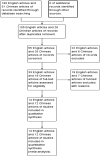
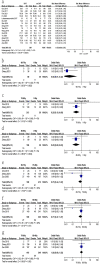

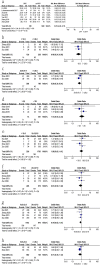
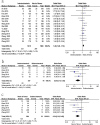








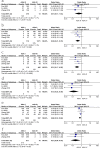

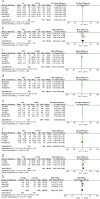
References
-
- Zhang YZ. Clinical epidemiology of orthopaedic trauma. 2. New York: Thieme; 2016.
Publication types
MeSH terms
Substances
LinkOut - more resources
Full Text Sources
Medical
Research Materials
Miscellaneous

